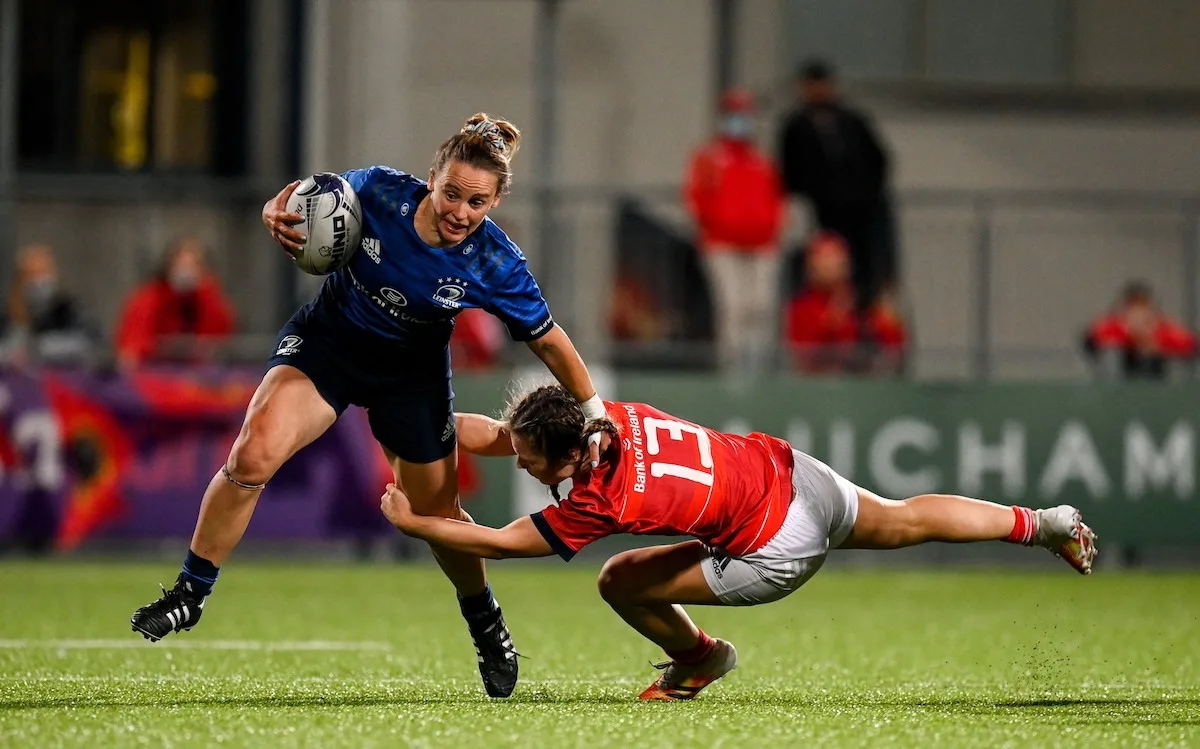Fending off opponents in rugby is not just a physical skill but also a tactical one. It requires precision, timing, and agility. To become proficient at fending off, rugby players need to practice specific drills that enhance their technique and decision-making abilities. In this section, we’ll explore some essential fending drills that can help players master this crucial aspect of the game.
Drill 1: Static Fend Practice
Objective: To develop proper fend technique and arm positioning.
- Setup: Players pair up, with one player holding a tackling pad and the other player holding the ball.
- Execution:
- The player holding the ball stands still, while the other player, holding the tackling pad, approaches.
- The ball carrier executes a fend-off, aiming to make contact with the pad while keeping the ball securely in one hand.
- Focus on correct arm positioning, extending the arm with the palm or forearm to create distance.
- Variation:
- Rotate players so that both get a chance to practice the fend-off.
- Gradually increase the speed and intensity of the approaching tackler to simulate game situations.
Drill 2: Moving Fend Practice
Objective: To practice fending off while on the move.
- Setup: Set up a designated area on the field for players to move around freely. Players are divided into pairs.
- Execution:
- One player holds the ball and begins to move around within the designated area.
- The other player, playing the role of the tackler, tries to approach and make a tackle.
- The ball carrier uses the fend-off technique to create distance and continue moving forward.
- Emphasize changing directions and footwork while fending off.
- Variation:
- Introduce multiple tacklers to simulate a more challenging scenario.
- Add cones or markers to create an obstacle course for the ball carrier, forcing them to navigate while fending off.
Drill 3: Decision-Making Fend Drill
Objective: To improve the player’s ability to make the right decision between passing, running, or fending off.
- Setup: Divide players into small groups, with one player designated as the attacker and another as the defender. Place the remaining players around as potential support runners.
- Execution:
- The attacker begins with the ball and advances toward the defender.
- As the defender approaches, the attacker must make a quick decision:
- If there is space to run, they can sprint past the defender.
- If there are support runners in a better position, they can pass the ball.
- If the defender is too close for comfort, they should execute a fend-off.
- The focus is on making the correct decision based on the situation.
- Variation:
- Increase the complexity by having multiple defenders and support runners.
- Add a time limit for decision-making to simulate game pressure.
Drill 4: Live Game Simulation
Objective: To practice fending off in a realistic game scenario.
- Setup: Set up a mini-game with two teams, including forwards and backs, on a reduced-sized field.
- Execution:
- Play a modified rugby game where the objective is for one team to carry the ball across the opponent’s try line.
- Encourage players to use the fend-off as a legitimate tactic during the game.
- Ensure that referees and coaches provide feedback on the legality and effectiveness of fend-offs.
- Variation:
- Alter the rules to focus on specific scenarios where fend-offs are commonly used, such as close to the try line or in open-field running.
Drill 5: Tackling Pad Challenge
Objective: To improve fend-off effectiveness under pressure.
- Setup: Players pair up, with one player holding a tackling pad and the other player having a ball.
- Execution:
- The player with the ball stands in front of the player holding the tackling pad.
- The player with the ball tries to fend off the pad holder while the pad holder actively tries to tackle.
- Encourage players to execute fend-offs while under pressure from a moving defender.
- Variation:
- Vary the starting distance between the players to simulate different game situations.
- Allow players to switch roles so that both practice fending off and tackling.
Drill 6: Video Analysis
Objective: To analyze and learn from professional players’ fend-off techniques.
- Setup: Gather players and coaches in a classroom or viewing area with access to video footage of professional rugby matches.
- Execution:
- Show video clips of skilled players effectively using fend-offs in actual games.
- Discuss key elements of their technique, such as timing, arm positioning, and decision-making.
- Encourage players to ask questions and engage in discussions about the videos.
- Variation:
- Use video analysis as an ongoing learning tool, regularly reviewing and discussing fend-off examples from various matches.
Fending drills
Mastering the art of fending off opponents in rugby requires dedication, practice, and a deep understanding of the technique’s nuances. These fending drills provide a structured way for players to hone their skills and decision-making abilities. By incorporating these drills into training sessions, rugby players can become more proficient at fending off opponents and use this valuable skill to their advantage on the field. Remember that safety and fair play should always be a top priority, and players should execute fend-offs within the bounds of the rules and regulations of the game.

